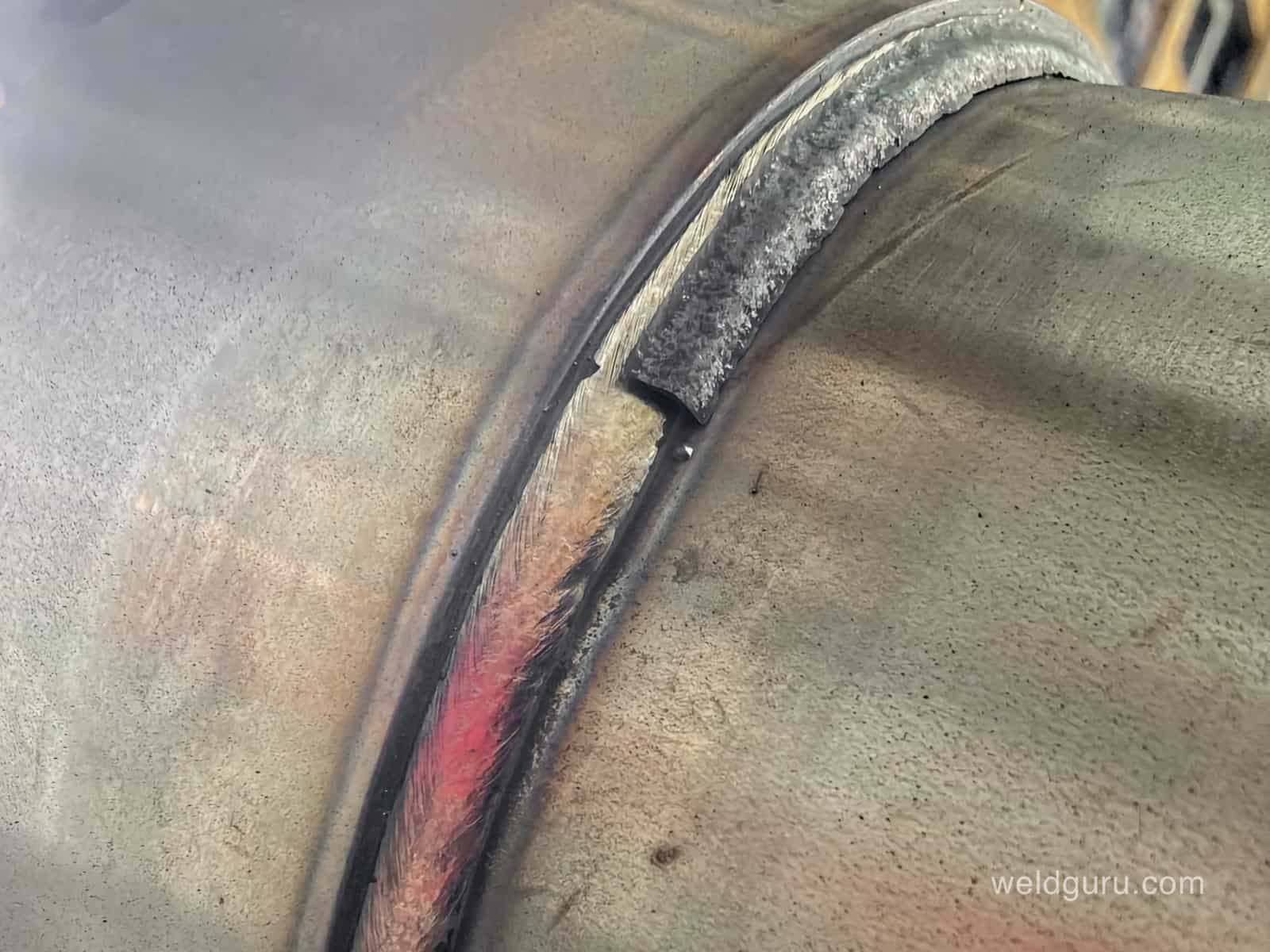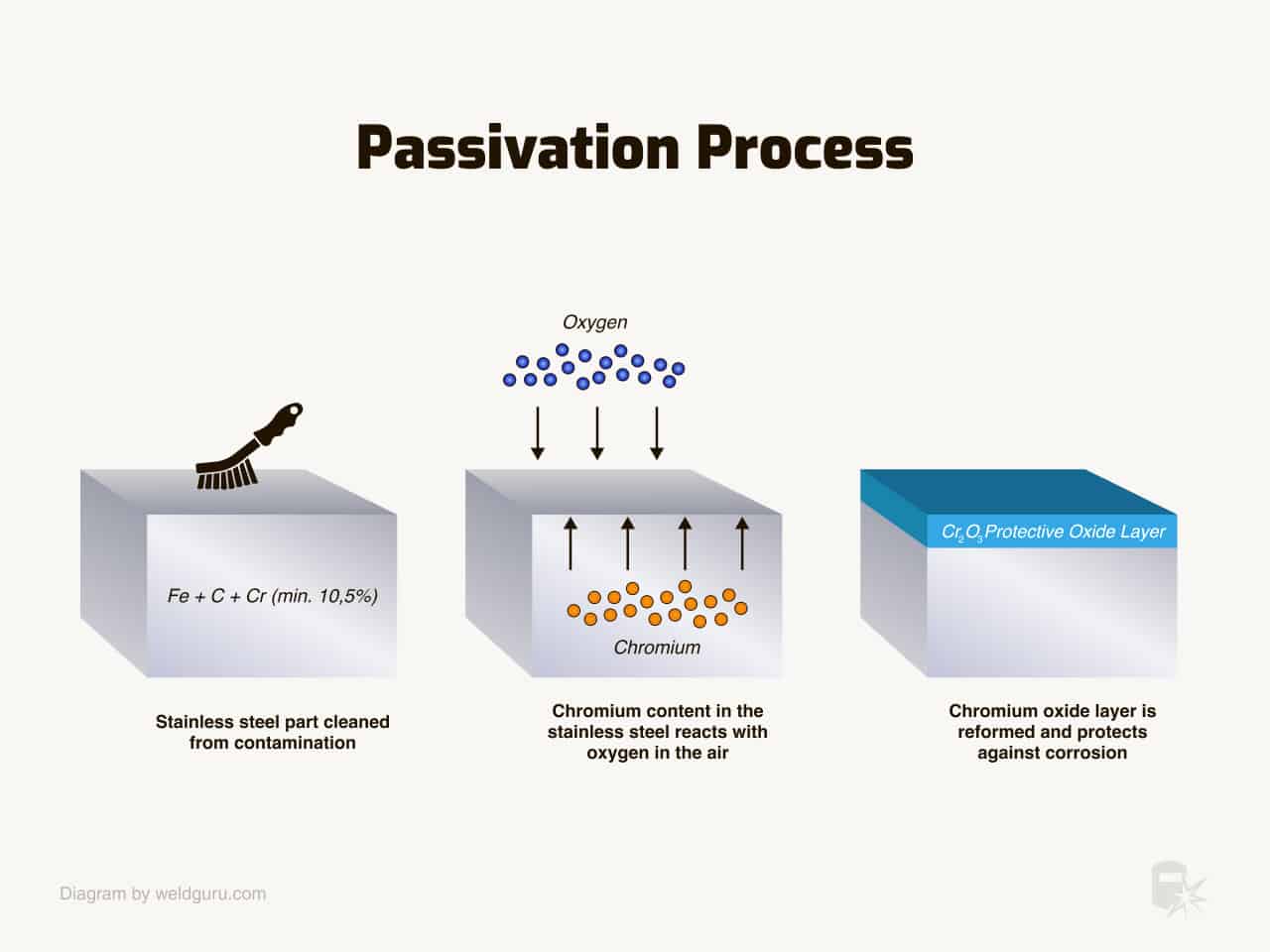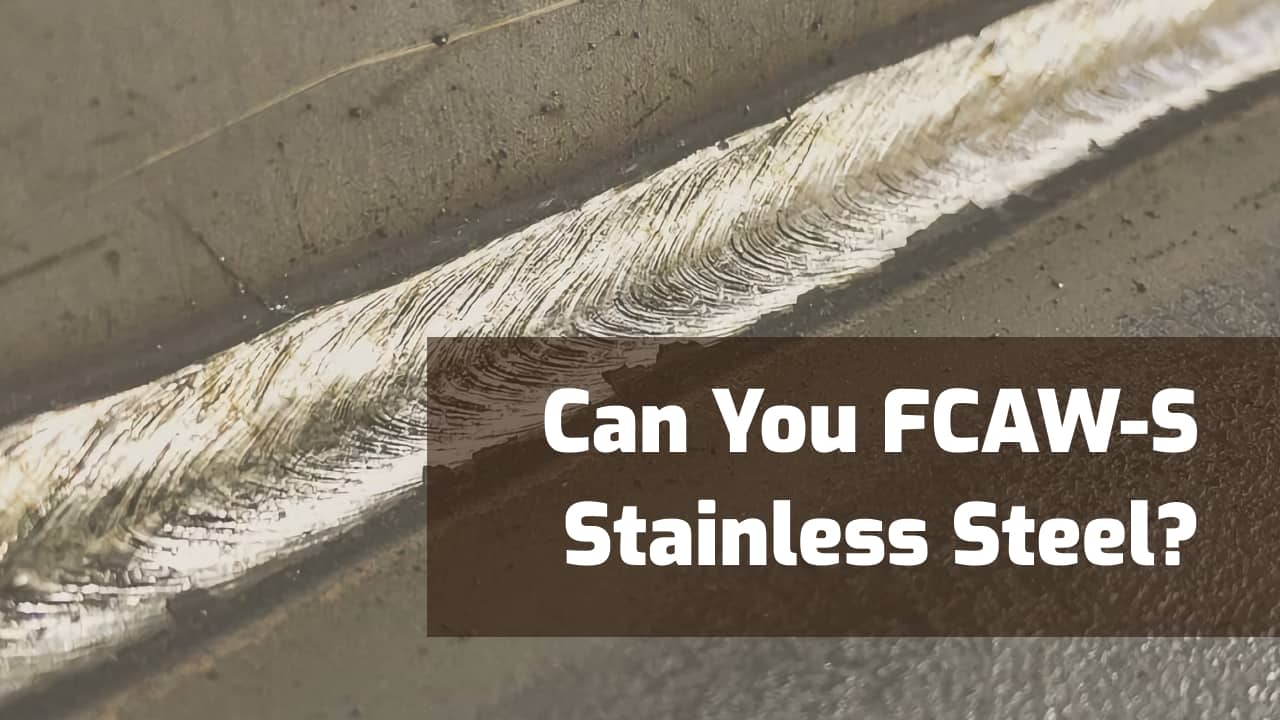There’s a lot of confusion surrounding the ability to weld stainless steel with a self-shielded flux core wire.
The truth is you can weld stainless steel with a self-shielded flux-core wire for small structural welds. However, flux-core without gas (FCAW-S) doesn’t provide a very clean weld, so you shouldn’t use it where looks are important.
Below, we will cover everything you need to know before flux-core welding stainless steel. The most important thing, however, is using the proper wire and settings.
From there, you must hone your skills, as stainless steel is difficult to master.
Why Would You Want To Flux-Core Weld (FCAW-S) Stainless Steel?
Before starting, you should determine why you want to flux-core arc weld stainless steel.
Self-shielded flux-core welding (FCAW-S) is very versatile but not the best choice for welding stainless steel. Flux-core with gas (FCAW-G), MIG (GMAW), or TIG (GTAW) welding stainless steel is preferred because it provides a better-looking bead.
If you already own a flux core welder that isn’t capable of FCAW-G or MIG, then it’s an okay option. However, if you have an FCAW-G/MIG welder, consider purchasing the proper gas and wire to MIG weld stainless instead.
Not only will it provide a cleaner weld, but it’s also easier to use.

© weldguru.com – Image usage rights
Purchasing a new welder or additional consumables isn’t likely worth it if you infrequently weld stainless steel. Finally, flux-core welding is a good option for welding stainless in a high-wind environment.
MIG welding doesn’t work well in high winds because the shielding gas gets blown away.
Unlike mild steel, stainless is not very forgiving because of the protective top coating.
Another reason that flux is not the best option for welding stainless steel is that you need to chip the slag off. Removing slag increases the chance of damaging this outer layer.
The upside to flux core is that it’s good for quick welds where strength is important, but looks are not. Not to mention, you don’t have to worry about purchasing and keeping shielding gas tanks.
If you want a structural weld that looks good, you’re better of welding with MIG or TIG.
Pros & Cons of Stainless Steel Flux-Core Wire
Pros
- A good option for quick structural welds
- Doesn’t require shielding gas
- Works in flux core and MIG welders
- Great for high-wind environments
- No need to carry a bottle of shielding gas
- Works better on dirty materials
- Easier to weld with than TIG
Cons
- Leaves behind slag that requires cleaning
- Stainless steel flux core wire is hard to find
- Flux core wire requires cool, dry storage
- Doesn’t look as good as MIG or TIG welds
- The wire is more expensive than mild steel wire
- Flux core produces more spatter than MIG
What Wire Do You Need To Flux-Core Weld Stainless Steel?
To weld stainless steel with flux core, you first must get the correct welding wire.
Unfortunately, you shouldn’t use the welding wire for traditional steel applications. Instead, stainless steel needs a special alloy for its filler material.
The exact alloy wholly depends on the type of stainless steel you work with.
Finding the Correct Wire
To find the correct wire, you must first identify the type of stainless you’re welding.
New stainless should have a three-digit number that tells you its type. The most common numbers are in the low 300s but can exceed 400.
If you still aren’t sure what type of stainless you have, try contacting your supplier, as they can provide that information.
Once you have the corresponding number, you can search for a matching welding wire. Fortunately, this is a pretty easy process because the metal’s number should be the same as the material’s.
For instance, a piece of 308 stainless requires a 308L wire.
What To Do When You Can’t Find the Correct Wire
Finding an exact match will often be difficult because some numbers are unavailable. Other times, a supplier may not carry that specific type.
You can find a large selection online at sites like Amazon. But if you’re in a pinch, there’s room for flexibility.
Most Common Wires
Here are a few common wires for FCAW stainless steel without gas and what you can use them for:
- 308L – Works with all 300 series up to 308; also works with 430 stainless steel
- 309L – Designed for joining mild or low-alloy steel to stainless steels, joining dissimilar stainless steels, such as 409 to itself or 304L stainless, and joining 309 base metal
- 312L – Used specifically for welding 312 stainless with other stainless or dissimilar metals
- 316L – Has a carbon content below .03% for welding austenitic alloys such as 316
What To Do If You Don’t Know the Metal Type
In some cases, you may be unable to identify the exact type of stainless steel you’re welding. In this situation, you’ll want to choose a versatile option like Blue Demon’s 308LFC-O.
Not using the exact wire means a weaker weld, but it’ll perform just fine for most non-critical repairs.
In fact, most repair jobs you’ll encounter will have no way of identifying the material type.
Typical Welding Parameters for Flux-Core Welding Stainless Steel
Once you’ve picked out a wire, it’s time to set up your welding machine and prepare your metal.
The setup process is essentially the same as welding regular steel with flux-core. However, you need to carefully consider your welder’s settings because stainless can quickly overheat, causing carbide precipitation.
When this happens, the material changes colors and becomes weak.
Aside from that, you’ll need to feed the wire through your welder with the proper amount of stick out.
Finally, set the amperage and wire feed speed.
These settings will need some adjustments based on the metal’s thickness. Most welders have a chart under the cover, but that’s for steel.
Instead, the table below will give you a starting point for stainless steel using 308L, 309L, and 312L wire.
| Diameter | Volt | Amps | Stick Out |
|---|---|---|---|
| .035 | 22-25 | 130-150 | ¾”-1” |
| .045 | 24-28 | 100-140 | 1” |
| 1.16 | 24-28 | 150-250 | 1¼” |
| 3/32 | 26-30 | 250-450 | 1½” |
6 Tips For FCAW Stainless Steel
Before you get started, go through some of our tips and hints. It covers several common problems and how you can resolve them.
You may even want to look back at them if you experience problems.
1. Check the polarity of the wire
If you start trying to run a bead and notice a lot of popping, and it’s difficult to keep an arc, you should check the polarity.
Flux core and MIG welders operate on either DC electro-positive (DCEP) or DC electro-negative (DCEN).
The setting determines whether the wire has a positive or negative charge. Most flux-core wire requires DCEN, but some stainless flux-core wire, like Blue Demon, actually requires DCEP, just like MIG.
2. The tip of the wire will ball up; this is fine

Credit: weld.com
One of the strange occurrences of welding stainless with flux-core is that the wire may have a small ball on the tip.
Having a ball appear on the end of a piece of regular flux core isn’t abnormal, but it may indicate you’re running too slowly.
When running a bead, you’ll even notice the ball bouncing at the end of the wire.
3. Run slightly hotter than the suggested settings
Stainless steel has different properties than mild steel. Additionally, the filler material is also different. You may find that the settings chart on your welder is a little off.
That is completely normal, as stainless steel requires a higher amperage setting.
Just turn your amperage up a little bit and run a few test passes on a piece of scrap steel to dial in your welder’s settings
4. With slag, you drag
There tends to be a lot of debate between pushing or pulling a weld. These arguments are valid with processes like MIG and TIG, but with flux core, you really need to pull.
By dragging your weld, it lessens the chance of flux inclusions. This weld defect occurs when flux pieces get trapped under the slag or in the weld.
The result is porosity in the weld, which looks bad and compromises the structural integrity.
You can push your weld with this process, but you must always keep the wire on the leading edge of the puddle or risk the weld faults previously mentioned.
The push technique requires a higher skill level, which is why it’s always suggested with slag, you drag.
5. Don’t Overheat the Metal
Stainless steel discolors with a lot of heat. Although you will need to turn up the amperage on your welder for stainless steel, you must be careful not to overheat it.
Some discoloration that creates a rainbow effect is normal. But if you apply too much heat, the stainless steel oxidizes, leaving it susceptible to rust.
Be sure to keep the material under 800 degrees.
6. Clean the Stainless Steel Carefully
Many see stainless as a durable metal, partly thanks to its rust and corrosion resistance. Most stainless steel is also hard to scratch.
However, you need to be very careful when cleaning it.
Flux core leaves slag, which you’ll need to chip off. Because stainless steel typically isn’t painted, you may not be able to use a wire wheel or grinding disc like you would on regular steel.
Need more tips? Check out these flux core welding tips and tricks.
Can You Use Regular Mild Steel Wire To FCW Stainless Steel?
Since stainless steel welding wire is pretty hard to come by and also very expensive, people often wonder if they can use wire for mild steel. There’s a lot of confusion and arguments surrounding this topic, but you can technically use mild steel wire on stainless steel.
Because mild steel and stainless steel are ferrous metals that contain iron, common wires like E71T-GS will work. The problem is that stainless steel contains chromium, which provides its protective properties. Wire for mild steel does not contain this extra compound.

© weldguru.com – Image usage rights
The initial weld with a regular flux core wire will look fine, but it’ll quickly develop rust if left uncoated. Not only will the weld itself rust, but it also compromises the metal around the bead.
Additionally, any spatter that gets on the material surface will cause the surrounding area to rust.
It’s important to note that certain applications don’t matter, such as surfaces you plan to paint. However, you shouldn’t use regular wire if you don’t plan on finishing the metal with a coating.
Surprisingly, some metal artists use steel flux core wire on stainless to purposefully rust or “age” their art.
Wrapping It Up
Flux core welding is one of the most versatile welding methods. Not only is it easy to use, but you can also weld a wide range of metals with it.
Stainless steel is just one type of metal that you can weld.
While you need to take some proper steps and use a wire designed for stainless steel, it’s still one of the easiest ways to weld stainless.
